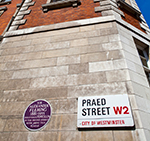
You may not know who, but at least one of your ancestors can thank Alexander Fleming for saving their life. He discovered penicillin, which ushered in the era of lifesaving antibiotics.
Fleming came from modest means, the son of a Scottish pig farmer, and was born on August 6, 1881. His academic potential was obvious early on. He graduated from high school at 16, and an inheritance allowed him to attend medical school where he finished with distinction within three years.
He began doing research but became a captain when World War I broke out. He proved the use of antiseptics such as carbolic acid on wounds was killing soldiers by interfering with the natural immune responses.
After the war he returned to research convinced we should only use antimicrobial agents that work with our natural defenses. He identified an enzyme he named lysozyme which turned out to be a poor antibiotic, but soon he made his greatest discovery.
One day upon returning from vacation, the messy Fleming, who had left out petri dishes cultured with the bacterium staphylococcus, found it had a clear area where the bacteria had died. A colony of fungus had contaminated the plate. He identified the fungus as a Penicillium and on March 7, 1929, he named the antibiotic penicillin.
His published paper went unnoticed until two researchers recognized its importance at the onset of World War II. Eventually, with great financial contributions from the Rockefeller foundation, penicillin was produced in large batches. By the end of the war, US companies were making 650 billion units per month, marking the beginning of the era of antibiotics.
More Information
How Being a Slob Helped Alexander Fleming Discover Penicillin
Sept. 28, 1928: Alexander Fleming discovers penicillin
This Is What Happened to the First American Treated With Penicillin
It happened on Mar. 14, 1942
A Brief History of the Antibiotic Era: Lessons Learned and Challenges for the Future
Front Microbiol. 2010; 1: 134. doi: 10.3389/fmicb.2010.00134